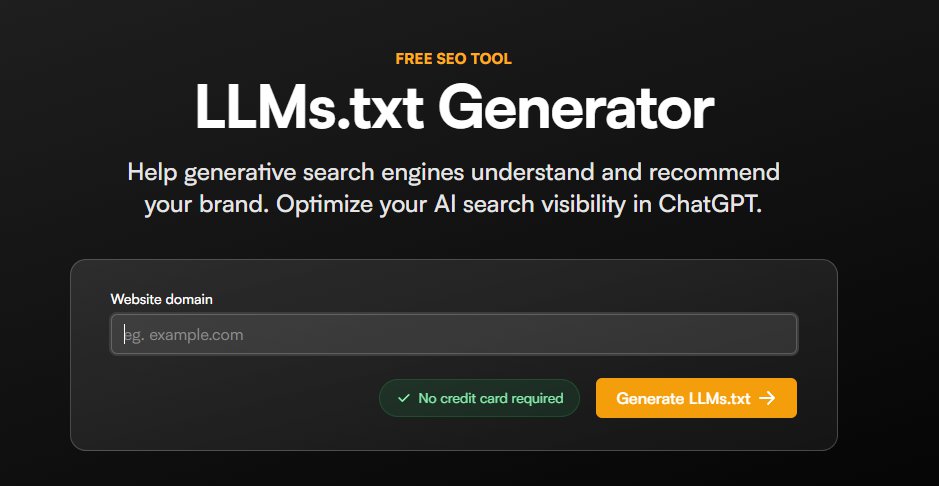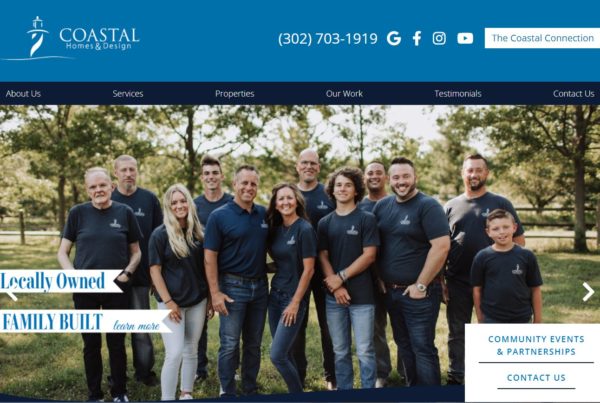llms.txt: The New Schema Markup for AI? Why Only 0.3% of Websites Have One (and Why You Might Want To)
A new file called llms.txt is quietly appearing on a handful of websites — just 0.3% of the internet, according to early adoption data. It’s not a typo. It’s a sign that a new era of AI search optimization is beginning to form.
 If you already know what Schema markup is, this will sound familiar — but
If you already know what Schema markup is, this will sound familiar — but llms.txt plays a very different role. Schema lives inside your pages, helping Google’s bots understand what each page is about. llms.txt, on the other hand, lives outside your site structure, and it’s designed for a new generation of crawlers — the ones used by large language models (LLMs) like ChatGPT, Claude, and Perplexity.
How It Works — and Why It Exists
AI crawlers don’t read the web like traditional search engines do. Many of them don’t execute JavaScript, don’t follow analytics events, and can’t interpret dynamic page layouts. They simply scan text — raw content, metadata, and markup — to determine what a site is about.
That’s where llms.txt comes in.
It acts as a machine-readable guidebook for AI systems, telling them:
-
Who you are
-
What your business offers
-
Which pages represent your core expertise
-
And how your content should be interpreted
In short, it’s a way to make your brand legible to machines.
Schema Markup vs. llms.txt: Same Goal, Different Angle
Schema markup and llms.txt share the same big idea — helping non-human systems understand context.
But they do it differently:
| Feature | Schema Markup | llms.txt |
|---|---|---|
| Lives | Inside your site’s HTML | At the root of your domain (like robots.txt) |
| Audience | Search engines (Google, Bing) | AI crawlers and LLMs (ChatGPT, Claude, Perplexity) |
| Format | JSON-LD structured data | Plain text / Markdown |
| Focus | Specific page elements (products, reviews, people) | Overall brand, key content, and context |
| Effect Today | Influences search snippets and ranking | Experimental — may influence AI understanding in future |
You could think of it this way:
Schema markup helps robots understand your pages.
llms.txt helps robots understand your brand.
And the more accurately machines understand what your business does, the more confident they’ll be in surfacing it when someone asks an AI question relevant to you. After all, their entire job is to rank information they’re most certain about.
Why It’s Speculative (But Worth Watching)
No major AI company has officially said “we use llms.txt” — at least not yet.
But history tends to repeat itself.
Fifteen years ago, structured data and Schema markup were also optional “extras.” Then Google decided they mattered — and the sites that had them built in early were miles ahead.
Similarly, as LLMs evolve into AI search engines, they’ll need trusted, structured signals about what a brand represents. When that happens, the few who already have llms.txt files in place will have a head start.
How To Add One Without Breaking Your Site
 If you run a WordPress site, adding it is simple and completely safe:
If you run a WordPress site, adding it is simple and completely safe:
-
Create a new text file named
llms.txt (you can use a generator like this one) -
Add it to your root directory (the same folder as
robots.txt). -
Write it in Markdown, listing your company, description, and most important URLs.
## Key Resources
– [AI Search Optimization](https://syndicate.marketing/ai-seo)
– [Delaware Beaches Online](https://delawarebeaches.online)
– [Local SEO for Small Businesses](https://syndicate.marketing/local-seo)
-
Save and test at
https://yourdomain.com/llms.txt.
Optional: you can also reference it in your robots.txt for discoverability:
The Takeaway
Right now, llms.txt is a “why not?” file — it won’t revolutionize your rankings overnight, but it costs almost nothing to implement and could become foundational later.
Think of it as SEO insurance for the AI era.
Because the more that large language models can clearly understand who you are and what you offer, the more likely they’ll be to surface your brand when it counts.
Speculative? Sure.
So was Schema markup at first.
So was HTTPS.
And so was government surveillance — right up until the moment it wasn’t.




